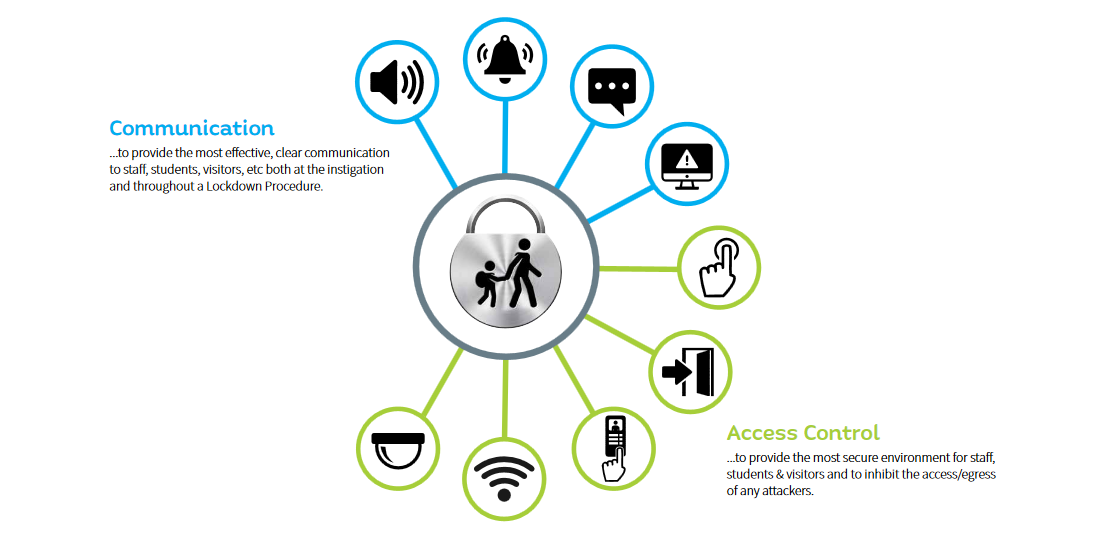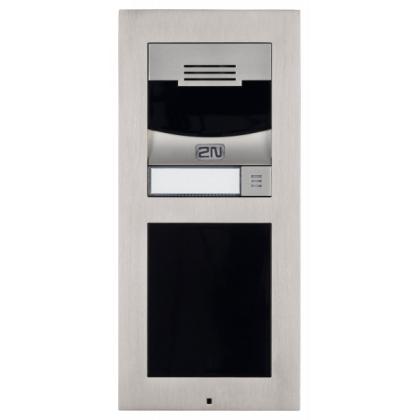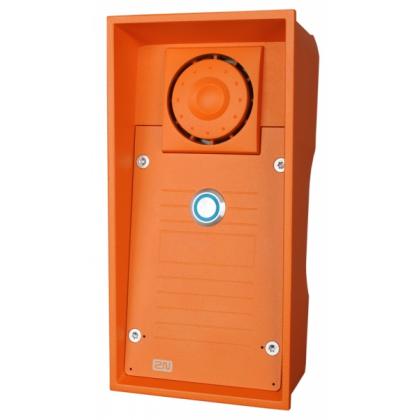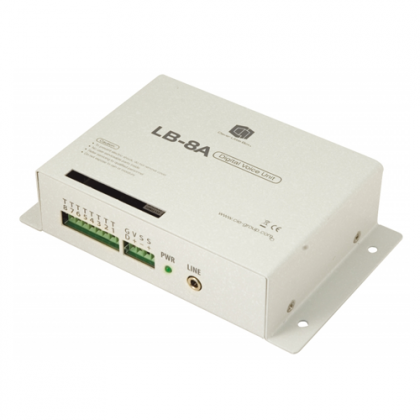What is a Dynamic Lockdown Procedure?
As a result of the escalating threat of firearms, weapons and terrorist attacks on schools, a Dynamic Lockdown Procedure provides an effective strategy to rapidly restrict access to the premises.
 What is a School Dynamic Lockdown Procedure?
What is a School Dynamic Lockdown Procedure?
In response to the increasing risks of firearms, weapons and terrorist attacks on schools, educational campuses and risk-sensitive buildings, the need for robust and effective procedures to protect children, staff or customers and to minimise risk is, sadly, now an essential consideration here in the UK.
A Dynamic Lockdown Procedure provides an effective plan to quickly restrict access to and movement throughout a building (or area of a building) through actions and physical measures in response to an imminent threat.
The fundamental components of a Lockdown System can be categorised into two main groups - Communication and Access Control:

Why should you develop a Dynamic Lockdown Procedure?
 Lockdown Procedures are becoming increasingly more critical due to growing threat of firearm, weapon and terrorist attacks - particularly on schools, colleges, universities and public access buildings.
Lockdown Procedures are becoming increasingly more critical due to growing threat of firearm, weapon and terrorist attacks - particularly on schools, colleges, universities and public access buildings.
As those seeking to undertake an attack will often require a level of advance planning, all opportunities to detect and deter such threats should be considered - such as day-to-day staff awareness, effective CCTV/surveillance use, deterrent communications and active security zones.
However, 100% prevention of attack cannot be fully guaranteed and, therefore, the ability to frustrate and delay attackers during the course of an attack and to place students and staff in a safe and secure place to reduce potential casualties can be hugely affected by a robust and effective Dynamic Lockdown Procedure.
What to consider in planning a Lockdown Procedure:
- How to achieve effective full or partial lockdown on the environment / building
- How to communicate with students, staff, colleagues as to what is happening in the initial stages and during any attack
- Training staff on the procedure
- STAY SAFE principles ('Run - Hide - Tell')
Communication with staff and students during Lockdown Procedure is key:
 Ensuring fast, clear communication when engaging and during a Lockdown Procedure is essential in order to ensure effective actions and to help build confidence is such an intense situation.
Ensuring fast, clear communication when engaging and during a Lockdown Procedure is essential in order to ensure effective actions and to help build confidence is such an intense situation.
A variety of communication methods are recommended - some of which may already be available resources in the school/building and can be supplied as part of a scalable School Lockdown system to meet your specific needs.
Consider:
- Public Address System (PA system) - using a microphone
- Pre-defined dedicated alarm tone or pre-recorded message
- Intercom and Access Control systems with audio capabilities
- Existing internal messaging systems such as text messages, email, staff phones
- Digital signage systems
- 'Pop-up' messages on staff computers
- Word of mouth
Train your staff on your school's Lockdown Procedure:
The fast moving nature of an attack means that it is imperative that staff are able to react quickly and effectively. Training staff on your building's individual Lockdown Procedure is key.
- Train all staff using the 'Stay Safe' principles (see below)
- Ensure all staff and students are aware of what is expected of them and what their roles and responsibilities are in the event of Lockdown Procedure
- Check all staff understand the process and procedures
- Regularly test and exercise plans with staff
- Regularly review and refresh training
'Stay Safe' principles - 'Run - Hide - Tell'
The National Police Chiefs Council (NPCC) has published simple guidelines and the below video on the principles of 'RUN - HIDE - TELL' to provide guidance should a weapons or terrorist attack occur...
RUN ...to a place of safety. This is a far better option than to surrender or negotiate. If there's nowhere to go, then...
HIDE It's better to hide than to confront. remember to turn your phone to silent and turn off vibrate. Barricade yourself in if you can. Then finally - and only when it is safe to do so...
TELL ...the police by dialing 999
How to develop a Dynamic Lockdown Procedure
-
Identify clear communication options to all staff
-
Identify how to quickly secure all access points (using locks, access control systems, door bars or furniture for example)
-
Identify how your site can be split into zones to allow specific areas to be locked down (as opposed to just the entire site)
-
Ensure clear roles and responsibilities for all staff form part of your Procedure
-
Effective staff training on your procedure should regularly be delivered to all staff
-
Stopping people entering or leaving the site and directing people away from the danger
-
Procedures should be flexible enough to deal with the unknown and fast-changing situations
-
As part of the planning of your individual Lockdown Procedure, you should identify all access and egress points in the public and private areas of your building or campus. Remember that access points may be more than just doors and gates (such as windows, roof lights, etc)
Free system design support for your Lockdown System
 CIE AV Solutions is one of the UK's leading providers of integrated audio visual and access control systems. Our team of in-house system architects provide a free specification & design service to help you develop the best Lockdown System for your environment using your existing or new infrastructure.
CIE AV Solutions is one of the UK's leading providers of integrated audio visual and access control systems. Our team of in-house system architects provide a free specification & design service to help you develop the best Lockdown System for your environment using your existing or new infrastructure.
Our design team will help to specify a Dynamic Lockdown System tailored to meet the individual needs of your school, college, university or corporate building.













